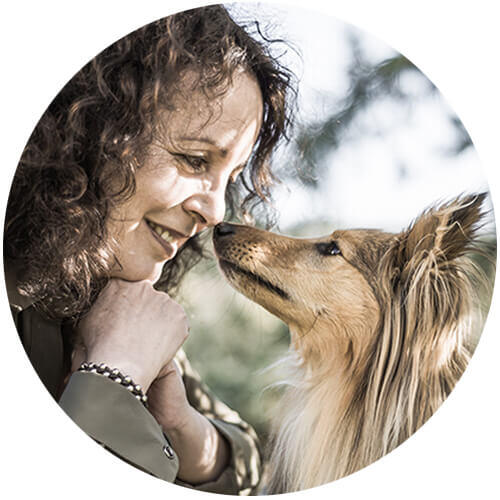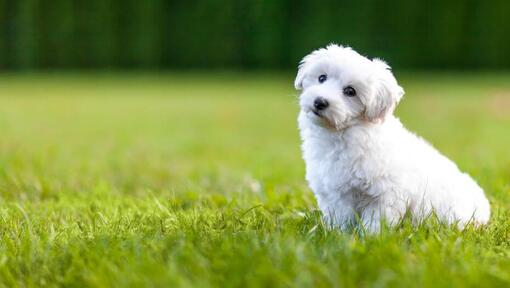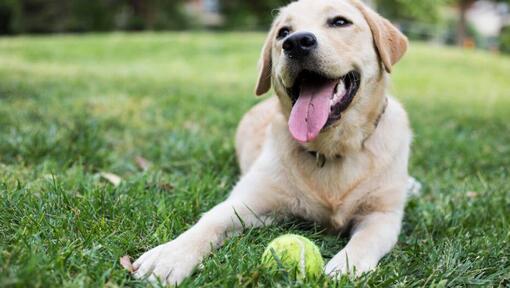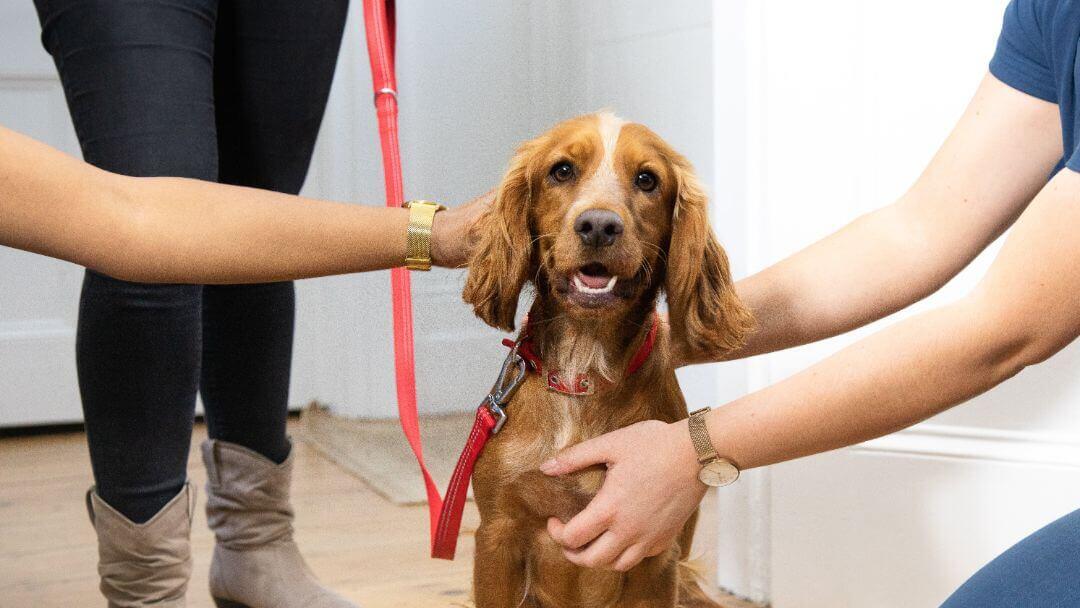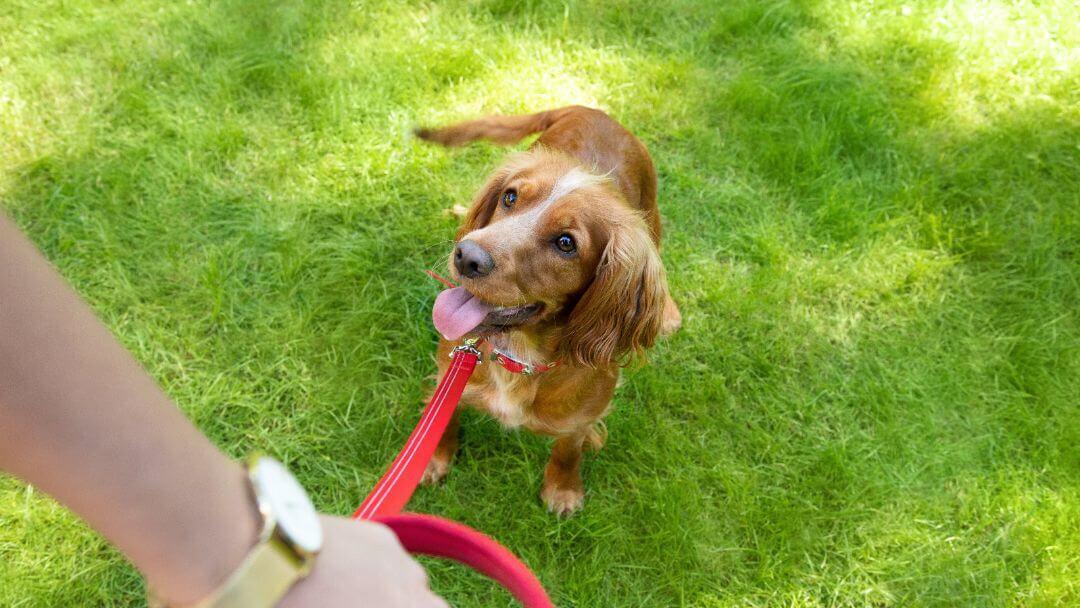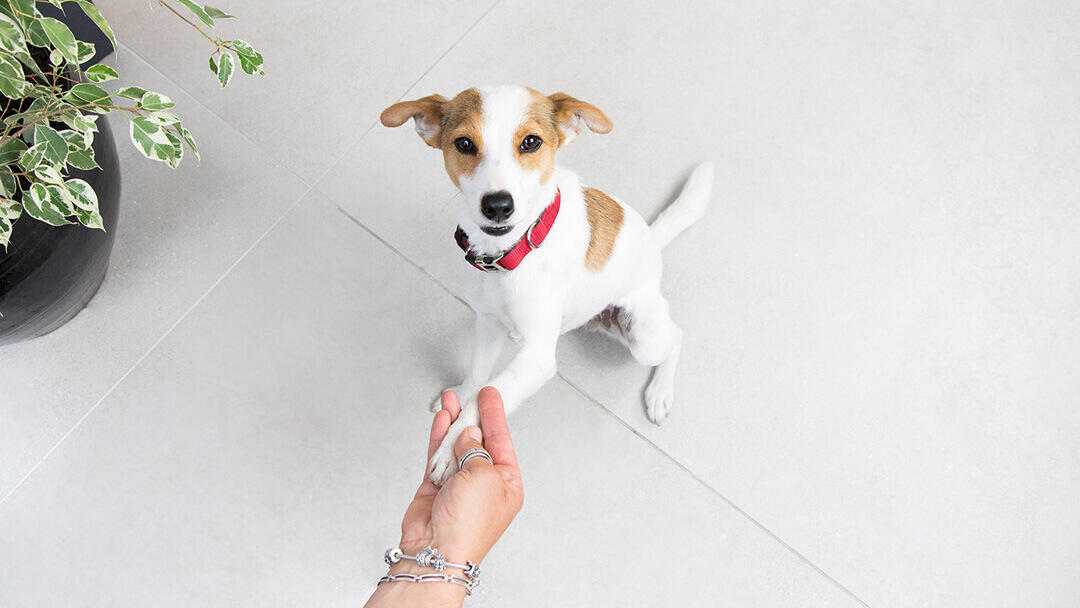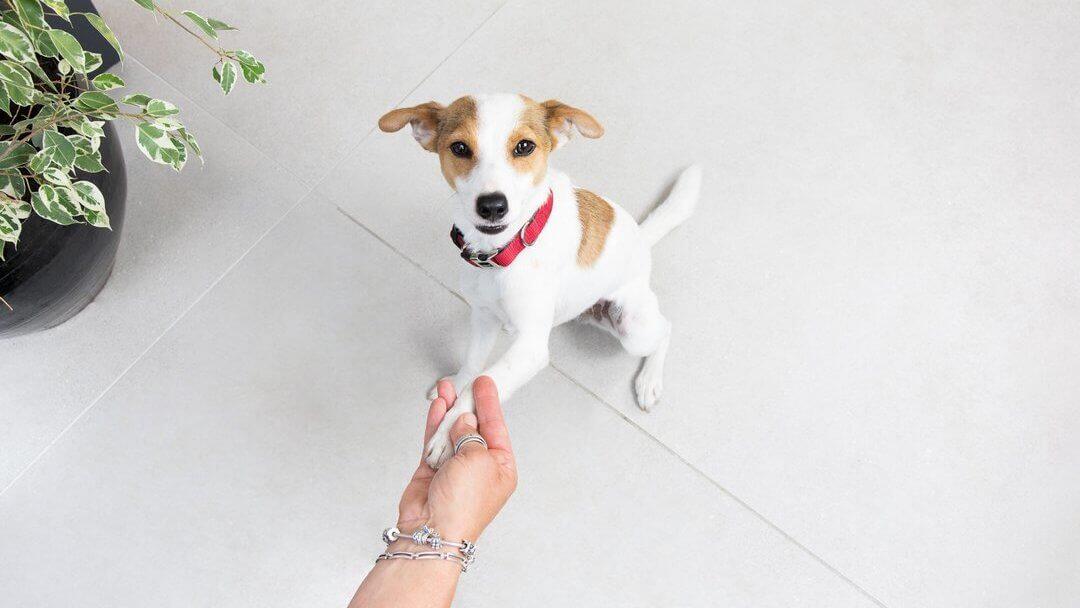Puppy Adolescence - How to Get Through the Teenage Years


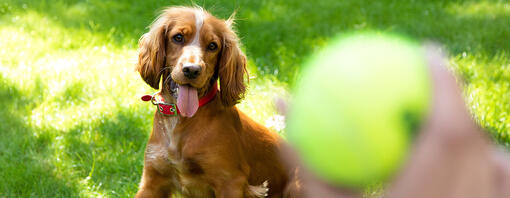
Adolescence is a challenging time for both you and your puppy. Learn how to navigate your dog’s teenage phase with both your relationship and your sanity intact!
At around six months of age, you’ll discover that your puppy has grown into a… teenager! This is a period that many owners don’t anticipate as they often expect their dog will just slip seamlessly from being a puppy into being an adult, but this couldn’t be further from the truth.
There is a reason why the most common age for dogs being given to rescue centres to be rehomed is between 6-18 months old, and this is because canine adolescence can be a tricky time. With a little knowledge, preparation and a fair bit of patience however, you will find that you can deal with all the issues that living with a teenage dog can bring, and you can both sail through it and out the other side with your relationship and your sanity intact.
When does a puppy become a teenager?
Puppy adolescence starts at different times for different breeds and can last for varying lengths of time. Smaller breeds tend to hit their teenage phase earlier than larger breeds who develop more slowly. A small breed dog will often be mature by around a year old, whereas a giant breed can be two years plus before their adolescence is behind them.
What happens during puppy adolescence?
During this period there are several developmental processes at work. Being aware of what they are and the effects they are likely to have on your puppy’s behaviour will mean you can be prepared to deal with them.
This in turn will shorten the time they will have an impact on both your lives.
Puppy adolescence is a time when your pup will be starting to become more independent. At this age, they are beginning to look at the world as adults rather than as an infant and so rather than relying on you for security; they are more likely to go ‘self-employed as they begin to form their own opinions and behaviours regarding the world around them.
This is a natural progression and part of a dog’s inherited survival instinct.
As a result of this developmental period, your adorable puppy is likely to experience some, or all, of the following - and this is likely to last anywhere between three to 12 months depending on breed:
- Ignoring you/cues you think they know
- Running off to see other dogs
- Being more pushy or rude with other dogs
- Totally avoiding other dogs
- Being more interested in humans they don’t know well/at all, than in you
- Training sessions going wrong
- Lack of ability to concentrate/focus
- More likely to react/bark/growl
- More sensitive/needy/cuddly
- Toilet training failures
- Excessive chewing and gnawing
- Rough mouthing/play biting
- Hyperactivity
This is by no means an exhaustive list and if you are experiencing behaviour changes in your dog anywhere from 6 months to 18 months old, and you have ruled out pain or some obvious event as a cause, they could well be trying to navigate the ‘terrible teens’.
Are teenage puppies teething?
As if all this wasn’t enough to be dealing with in your canine adolescent, dogs also will have got their full set of adult teeth at around six months of age, but they need to set properly in the gums, and for this to happen a puppy really needs to be able to chew. Many people don't understand this and think their teenage dog is just being destructive when they actually have a physical need to have things to gnaw on. Kong toys are perfect for this and, stuffed with food, they will provide ideal chewing opportunities; and can save your furniture and your shoes! For more help with this, check out our puppy teething guide.
Why is my teenage puppy suddenly scared?
Dogs also have a second fear period that happens somewhere between 6-18 months of age. Sometimes this just happens once but in other dogs it can happen several times which may coincide with growth spurts or hormone surges.
This period is characterised by your puppy seeming to be reactive or scared of things that haven’t bothered them in the past; people, dogs, unfamiliar objects or places etc. Managing this period properly is vitally important as this seems to be the time when single-event learning is the most likely to occur. In other words, a bad experience at this time can have a lasting effect on your dog’s behaviour even if all their previous interactions have been positive as making split second decision as to what is ‘safe’ and what is ‘dangerous’ is a vital survival mechanism for an adult.
Why is my adolescent dog behaving differently?
These periods all coincide with the hormone surges that come with adolescence, and this can increase excitability, intensity and over-reactions to just about everything. Shy dogs can become shyer and confident dogs can become more (sometimes over) confident.
This is the time when a lack of adequate and appropriate dog socialisation and habituation can become an issue, and those dogs that have missed out on this can start to show behaviour problems associated with fear (including reactivity and perceived aggression).
If you haven’t already, talk to your vet about dog neutering (and also a behaviourist if you are hoping this will improve your dog’s behaviour) and decide if it is right for your dog. There are health benefits for both male and female dogs and it may make certain behaviours easier to manage. It isn’t however right for every dog and it isn’t a cure for many behaviour problems – and can exacerbate others.
How to deal with puppy adolescence with teenage puppy training
The important thing is to stay calm, don’t punish your dog in any way as this will just damage your relationship and make them even less likely to want to work with you. Instead, go back to the very basics with your training cues – and teach every exercise again from the beginning. Don’t forget to include lots of rewards as teenagers need plenty of encouragement and positive reinforcement (even more so than puppies).
We have some great ways you can engage in teenage puppy training below:
Revisit puppy recall training
Your pup might be ignoring your recall training cues in their teenage phase. Here's an example of sensible management that prevents a problem getting worse, while also avoiding putting pressure on that teenager brain:
Problem: Your teenage dog has totally forgotten how to come back when you call them! Instead, they bound up to other dogs and people, pushing for a game, a scrap or mugging their human for treats. Walks are now not fun for anyone!
Management strategy: Walk dog on a long line and harness, avoiding areas with lots of other dogs/people. Instead select quieter areas and/or quieter times of day, and particularly areas with sufficient space that you can change direction or route and get space away from distractions. Here you can practise very basic recalls with no distractions and reward every success. This way you are setting your dog up for success and not failure.
Why: Avoiding stress and training failures means your dog has more capacity, mentally and emotionally, to cope with day-to-day teenage life. It also means that they won’t have a negative experience that can shape the way they look at the world. Adolescence is a time when a dog is re-evaluating everything and everyone in their life and starts to look at the world with the eyes of an adult and not as a puppy. Bad experiences now can go on to shape how they view the world and how they behave in the future.
This also reminds them of what is rewarding about recalls, improves their behaviour, and avoids them from practicing behaviours you don’t like. This simple approach stops this from getting worse or becoming a habit. It also sets them up to succeed and earn a reward – which goes a long way to counteracting the frustration, stress and confusion of teenage months.
While this might all feel like a step back in your training, you will find that by taking this approach, your dog will come out the other side of adolescence well-behaved and with their training skills – and your relationship – intact.
Play time
Your adolescent does however need to keep on top of their social skills. If your dog has a canine friend that they know well and get on with, give them a chance to go for walks together and have some dog play time.
Watch them as they play so that if things get too rough – or one-sided – you can stop the game for a little while to calm things down. This isn’t a time for rough and tumble play with unknown dogs, however.
Training Classes/Activities for teenage dogs
If you feel you want to look at some more organised activities that can help the teenage brain, here are some suggestions. There are plenty more, however – and you are looking for things that will use their brain and problem-solving skills, earn rewards but not strain their still growing bodies.
ACE Freework – this is something you can do at home (though it would be best to find an Animal Centred Education practitioner to show you how!).
A Freework set-up is any secure, quiet space, with lots of objects for your dog to interact set out as a totally informal course. Treats are placed on and around, starting with soft treats that are easy to reach (and plenty in between so there are free treats - there should be no pressure to do a difficult obstacle just to get a treat). Objects could include:
• Textures – blanket, fake turf, plank, baking tray, concrete slab, grass, gravel
• Objects – puzzle toys, wobbly balance toys, muffin tins, concrete block, brick, upturned laundry basket/right way up basket, open cardboard box, garden bench…
As long as the objects are safe, and will not fall on your dog or shift under them dangerously, you can use your imagination and what you have to hand. Start out with just a few and add new ones as your dog gets the hang of it. You can also vary the treats and how they’re used, for example smear some soft pate where it can be licked off.
Scent work is great for adolescents – and many training classes run outdoor scent work classes or workshops with small groups.
A way of using their nose is Mantrailing. This is growing in popularity, and is as it suggests, tracking a human scent. Any dog can do this, and Mantrailing clubs and trainers will take you from ‘never having thought of it’ to ‘expert level’ in whatever time frame is right for you and your dog. It is all done on-lead, one dog at a time and it’s really up to you if you want to get competitive about it, or just do it as an exercise to engage with your dog and occupy their brain!
Hoopers is another new activity for dogs that is simple to learn – although hard to perfect! It is a little like agility – in that you follow a course – but there is no jumping (which teenagers are too young to do yet) instead the dog goes through a series of hoops. This will help with your training and obedience while being something you can do at a very novice level to start with.
These are just a few examples of activities you can try with your adolescent dog, there are others and every dog is an individual. Don’t assume that just because your dog is likely to lose their mind in a hall full of other dogs, that there is nothing you can do, but equally, keep in mind that adolescence is a time to make life as easy and fun as possible. Now is not the time to push on and try to progress towards your goal of ‘a well-behaved adult dog’ or insist on improving some of the basics. Instead, it’s a time for management, avoidance of disaster and strengthening your bond together. Managed well, and properly understood, it can even be fun!
Avoid stress by not over-exercising your teen pup
You may find that to keep your adolescent dog calm and as stress-free as possible, physical exercise takes a bit of a back seat, right at a time when it would seem that more exercise would be best to tire them out. However, ‘more exercise tires them out’ is a fallacy, it just makes them fitter, and that means they need more physical exercise to become exhausted. An exhausted dog (or person!) is not someone who deals well with stress, nor is it someone who learns well, so this isn’t the solution it may appear to be.
Here are some activities that can be used to help exercise your adolescent dog’s brain, and improve the bond between you, without too much stress or pressure.
- Indoor training
- Hide and seek
- Enrichment dog games and toys
- Teach tricks (you can expand your dog’s training repertoire without distractions)
- Look at different enriching ways to feed your dog (e.g., scatter feeding, stuffed in a rubber toy like a Kong or inside a cardboard tube they can rip/tear)
Be guided by your own dog. Some sail through adolescence as teen angels – while others are definite hooligans. Neither is ‘good’ or ‘bad’, they are just doing the best they can and all have their own individual personalities and ways of dealing with this unavoidably developmental period.
How puppy socialisation helps during teenage years
Watch your puppy closely and notice if they seem to be reacting differently to things they normally take in their stride. Do not think they are being difficult, tell them off or punish them for these behaviours otherwise you will exacerbate their fear.
Instead, remember your initial socialisation and habituation techniques and work to make all encounters positive. Don’t force your dog to ‘face their fears’ but instead keep a comfortable distance where they do not feel they have to react or be worried, let them approach, retreat and explore in their own time, and reward them with treats to keep all interactions positive.
Avoid negative encounters or potentially worrying situations as far as is possible in this time as a bad experience now could colour the way your puppy looks at the world and affect his behaviour as an adult. While continued socialisation is vital, keep it to dogs, people and places you know, as this is the period where it is better to have little experience than a bad experience. So, get out and about, keep encouraging your puppy to be social but work hard to keep all these experiences and encounters positive and fun.
Top tips for getting through the troublesome teenage puppy phase
- Don’t think your teenager is being difficult; these hormonal changes are challenging for them and they need your guidance.
- Keep training and working with your dog. Don’t lose your patience if they are not so focused as they were or seem to have forgotten everything they ever learnt.
- Keep all social interactions positive and be as careful as you can be not to let your dog encounter antisocial or aggressive dogs as this is a time when these encounters can shape the way your adult dog interacts with those around them.
- Only let your dog play with dogs they know and get on well with.
- Be prepared for your dog to be worried or fearful around things or situations they took in their stride in the past. They are reassessing everything with the eyes of an adult so be just as sensitive to these fears as you were when they were a puppy. Let them approach, retreat and deal with things in their own time.
- If you are at all worried about your dog’s behaviour, talk to a behaviourist who can help you get through your dog’s adolescence.
While sometimes it is easy to think that your adolescent puppy is intentionally trying your patience, in reality this is a complex developmental time for your dog. Keep that in mind and, with a bit of teamwork, you will get through it together.
If you need help teaching your rebel pup some manners, check our useful guide on how to stop puppy bad manners or get a refresh on puppy training tips to reintroduce them to the good habits.

